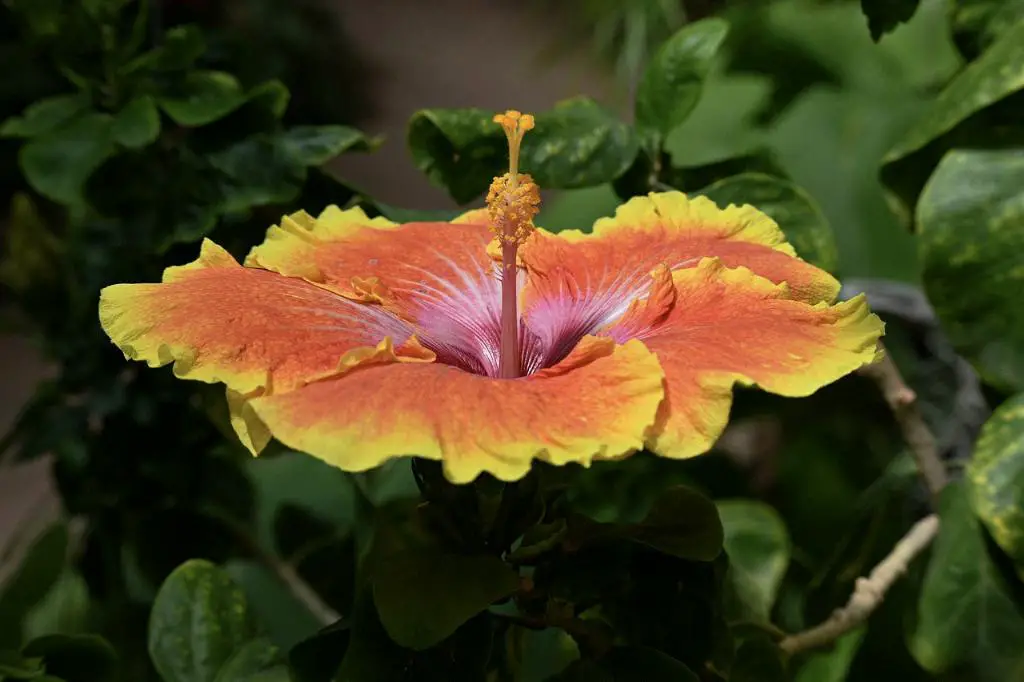When it comes to growing hibiscus plants, there are some key factors to consider to ensure they thrive in your garden or indoor space. First and foremost, it’s essential to provide the right growing conditions for these beautiful flowers to flourish.
Outdoor hibiscus plants prefer moist but well-drained soil, so make sure to plant them in an area that allows excess water to flow away easily. Additionally, they thrive in warm and sunny locations, so choose a spot that receives plenty of sunlight throughout the day. It’s also beneficial to protect outdoor hibiscus from strong winds, as they can damage the delicate blooms.
If you opt to grow hibiscus plants indoors, it’s crucial to place them in a bright area that receives indirect sunlight. Direct, strong sunlight can scorch the leaves and hinder the plant’s growth. Indoor hibiscus will appreciate a sunny spot near a window but out of the path of intense rays.
Regardless of whether you choose to grow hibiscus indoors or outdoors, it’s essential to select the right type of soil for optimal growth. Outdoor hibiscus plants thrive in loam-based, peat-free compost that allows for proper drainage and moisture retention. On the other hand, indoor hibiscus plants do well in a similar mix that provides adequate nutrients and drainage.
Water plays a crucial role in the growth of hibiscus plants, so it’s important to maintain a consistent watering schedule. Outdoor hibiscus plants typically require more water, especially during hot summer months, while indoor plants may need less frequent watering. It’s best to water hibiscus plants when the soil feels dry to the touch, avoiding overwatering to prevent root rot.
Fertilizing hibiscus plants is essential to promote healthy growth and vibrant blooms. Use a balanced fertilizer specifically formulated for flowering plants and apply it according to the manufacturer’s instructions. Outdoor hibiscus plants benefit from fertilization during the growing season, while indoor plants may require less frequent feeding.
Pruning hibiscus plants is an important aspect of their care, as it encourages new growth and promotes a bushier plant. Remove dead or damaged branches, as well as any spent flowers, to keep the plant looking tidy and healthy. Pruning should be done with sharp, clean tools to prevent damage to the plant.
To protect hibiscus plants from pests and diseases, inspect them regularly for any signs of infestation or infection. Common pests that may affect hibiscus include aphids, spider mites, and whiteflies. Treat infestations promptly with insecticidal soap or neem oil to prevent further damage.
Properly caring for hibiscus plants during the winter months is crucial to ensure their survival and health. Outdoor hibiscus plants may require protection from frost and cold temperatures, so consider covering them with a frost cloth or moving them to a sheltered area. Indoor hibiscus plants may benefit from a slightly cooler environment during the winter to promote dormancy.
Regularly monitor the growth and health of your hibiscus plants by observing their leaves, flowers, and overall appearance. Address any issues promptly to prevent them from escalating and impacting the plant’s health. With proper care and attention, hibiscus plants can thrive and reward you with stunning blooms throughout the growing season.
By following these key tips and guidelines for growing hibiscus plants, you can create a beautiful and vibrant display in your garden or indoor space. Whether you choose to grow them outdoors or indoors, providing the right conditions, care, and attention will ensure that your hibiscus plants flourish and bloom to their full potential.

